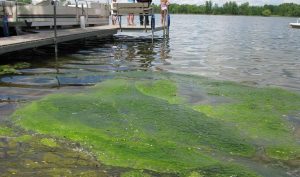Helping our Maine Lakes: You Can Make a Difference

Snow Covered Lakes- Use Caution
February 19, 2025
First Harbinger of Spring-Maple Sugaring
February 25, 2025Helping our Maine Lakes: You Can Make a Difference

February 2025- If you are a boat enthusiast, you will not be able to miss the people sitting at the boat ramps in Maine waiting to inspect your boat for signs of aquatic plants that may be hiding in the nooks and crannies of your boat or trailer.
These lake heroes are just an example of the volunteers taking part in helping protect our lakes in Maine.
Lake Stewards of Maine (LSM) is an organization whose mission is to help protect Maine lakes and promote lake stewardship through widespread citizen participation in the gathering and dissemination of credible scientific information pertaining to lake health.
Hundreds of volunteers are trained by LSM to monitor a wide range of indicators of water quality, assess watershed health and function, and screen lakes for invasive aquatic plants and animals. Their work provides a vital first-hand account of the evolving conditions of Maine’s Lakes and Ponds.
There a number of areas volunteers can become involved in.
Water Quality Monitor
Water quality volunteers use a Secchi disk and view scope to measure water clarity, some also use dissolved oxygen meters to assist in assessing lake health. Volunteers are trained and certified to collect other water quality information including Phosphorous and Cholorphyll-a. Data is collected approximately every two weeks between May and October and submitted at the end of the season. The number of volunteers who monitor quality on an individual lake is generally limited to the size of the body of water, and they are trained and re-certified on a regular basis. If you are interested in learning more about this work, visit the www.lakestewardsofmaine.org website.
Aquatic Invasive Species Prevention
Ah, these are your boat monitors. Plus, these volunteers may take part in further activities including milfoil eradication in infested waters.
Invasive aquatic plants (IAS) cause habitat disruption, loss of native plant and animal communities, reduced property values, impaired fishing and degraded recreational experiences.
IAS that are currently known to be established in Maine waters are variable leaf water-milfoil, Eurasian water-milfoil, curly-leaf pondweed, European naiad, European frogbit and hydrilla.
Maine has over 6000 lakes and pond and thousands of miles of stream habitat. This makes preventing the spread of IAS an enormous environmental challenge with enormous and ongoing control costs.
Early detection provides the best hope of eradication. That is why LSM’S trained volunteers are so important. If you are interested, or know someone who is interested in helping out with this important work contact either your local lake association or The Maine Lake Stewards of Maine at www.lakestewardsofmaine.org.
Watershed Assessment
A watershed is an area of land that drains to a common water body. They supply the water that replenishes our lakes, along with other elements critical to supporting life, such as nutrients and organic matter.
Phosphorus is a naturally occurring element that feeds lake algae, a healthy part of any lake ecosystem. But too much phosphorus can put a lake out of balance, feeding massive algae blooms. The biggest source of phosphorus in sand and soil that is washed into a lake after a rain event.
The natural landscape found around lakes protects them. Multiple layers of vegetation help intercept rain, reducing the amount of water hitting the forest floor. Loose, deep layers of leaves on the forest floor absorb water and nutrients, minimizing flow directly into waterbodies.
Once the areas around watersheds are developed with roads, manicured lawns, rooftops, houses, driveway, etc., impervious surfaces are created. The rain than channels over the land gathers speed and creates channels of greater size allowing excess nutrients to move as the soil is eroded. This results in increased phosphorus being deposited into the lake which can result in cloudy water, algal blooms, fish kills and water you wouldn’t want to swim in.
Lake Smart is an education and reward program for lakefront property owners that teaches them to maintain their homes in ways that protect lake water quality and property values. If you are interested in learning more, contact your local lake association or visit www.lakes.me/lakesmart.
If you are on this blog site, I know that you love and value our lakes here in Maine. Please, take a moment to visit the links in this blog and to educate yourself on caring for our lakes. Perhaps, I will be seeing you at boat ramp waiting to inspect my boat. I hope so.
Teresa Dyer-Ferent, Mr. Lakefront Inc.
We’re Your Maine Lakefront Real Estate Experts

